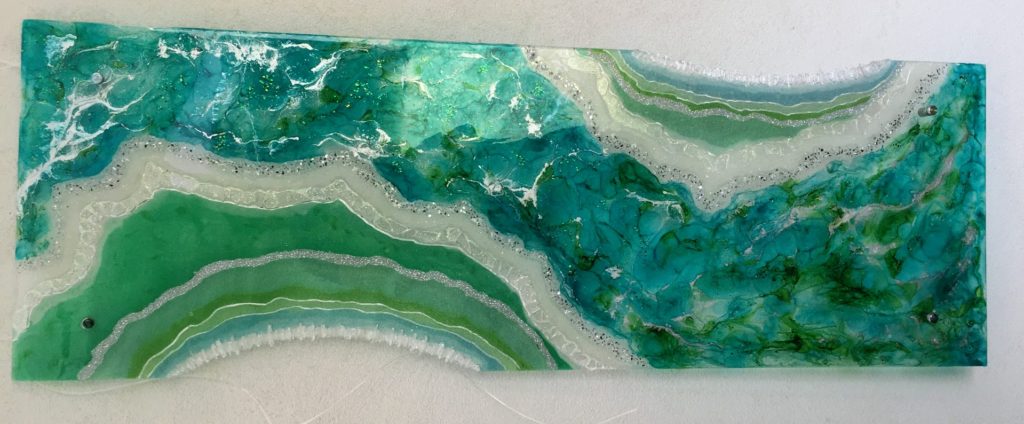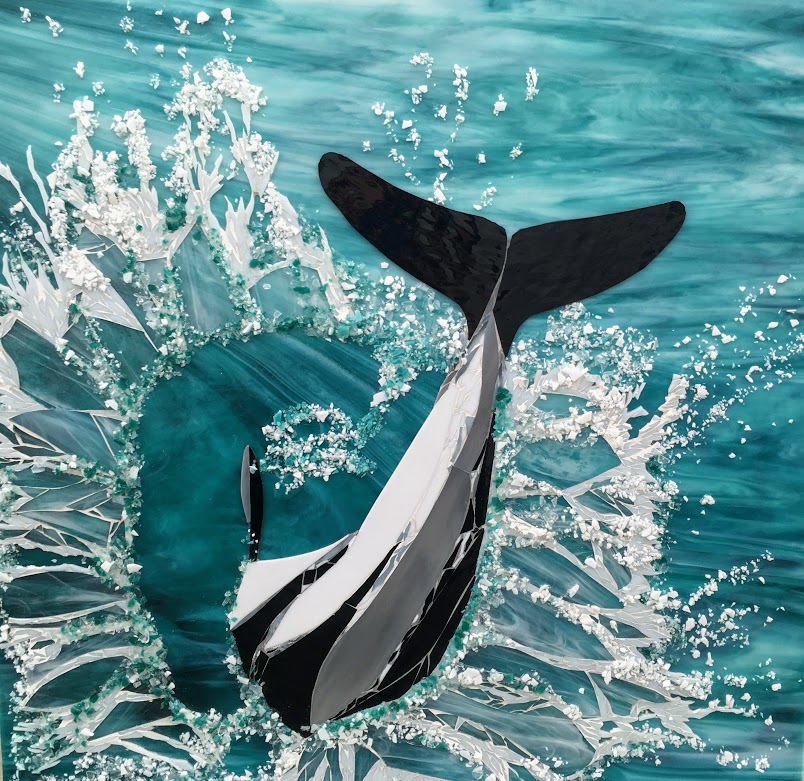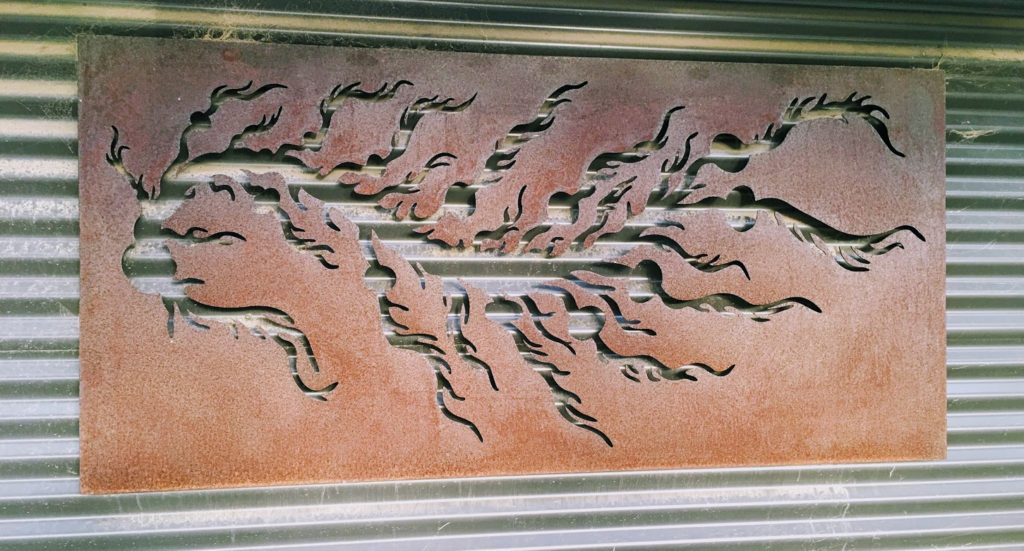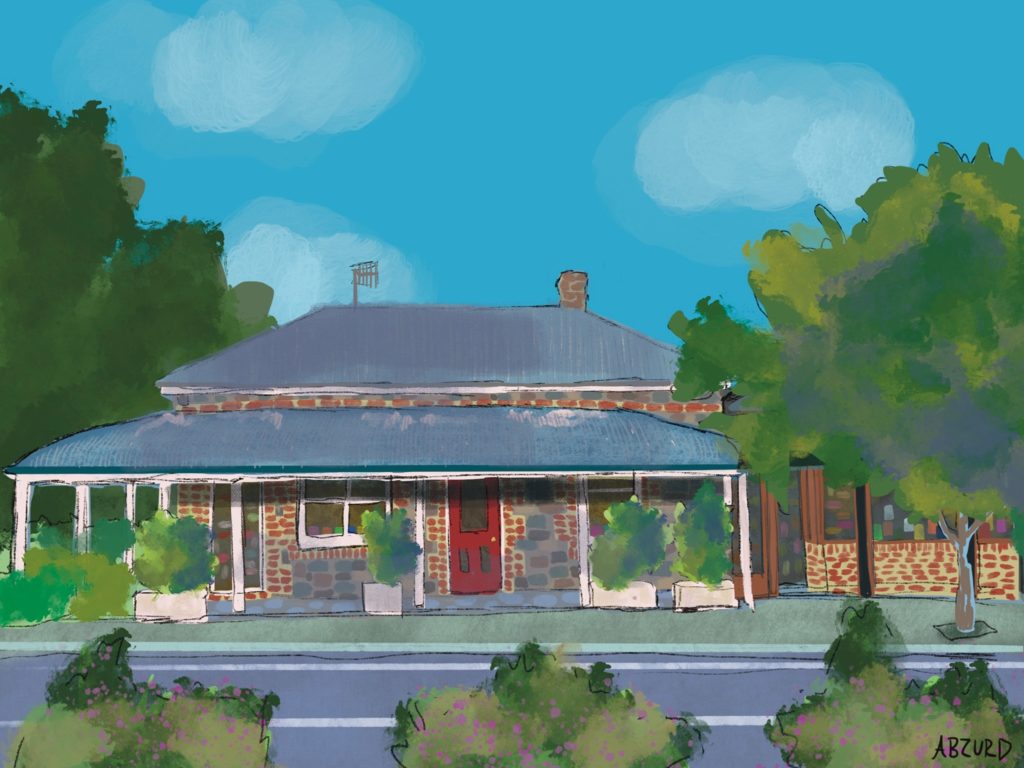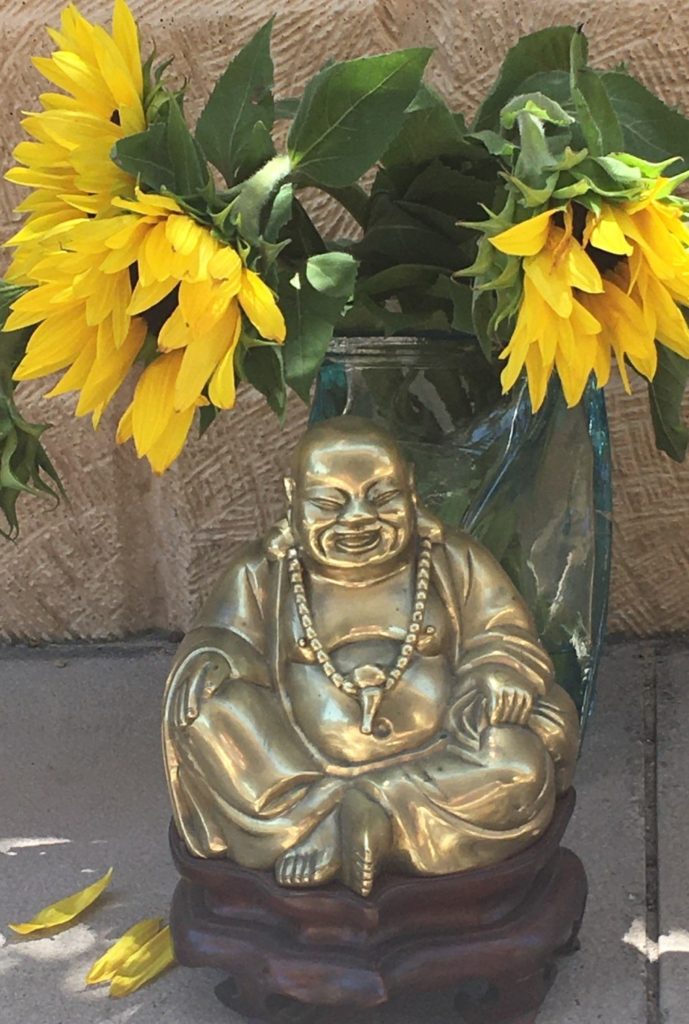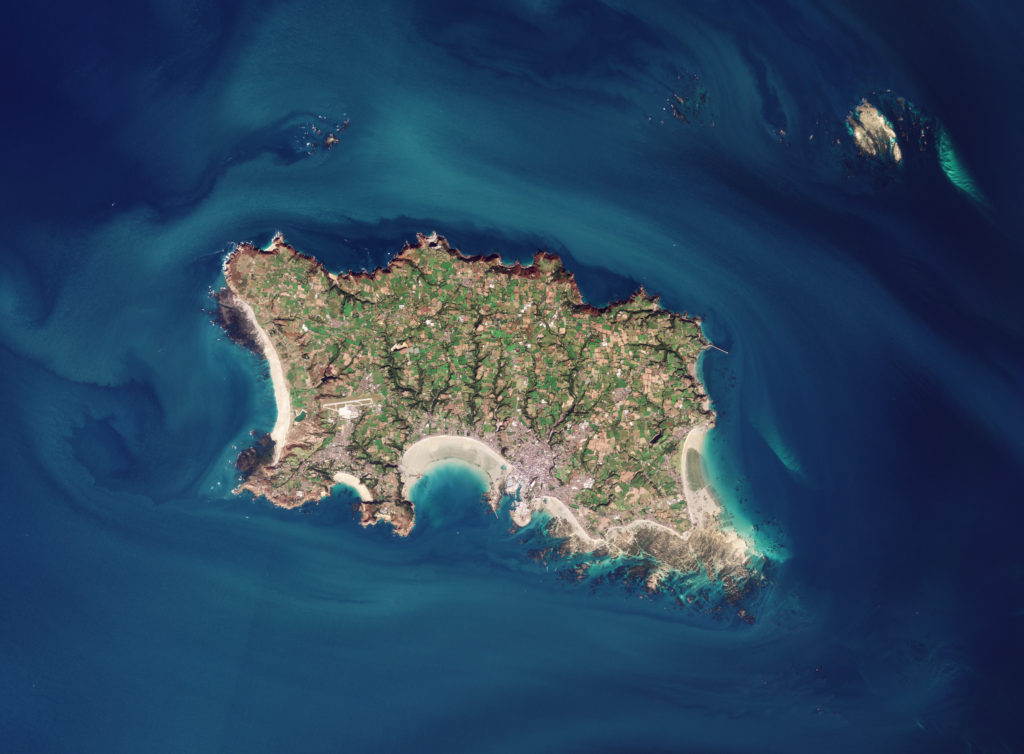
It’s 1991. We have taken an overnight train to Rome from Genoa. The train is absolutely packed and there are no seats left. We are perched in the aisle on our rucksacks. Sandy-eyed, grubby and aching, we stagger into the city as the sun rises on a bright Sunday morning. An early mass at the Basilica of Santa Maria Maggiore, and herds of nuns gather on the front steps. Inside, we admire a multitude of marble mosaics and a thousand statues. We eat our breakfast rolls – courtesy of the Italian Aunts in Milano – in the piazza behind the church, and find ourselves immediately swamped by a mob of eager pigeons. Breakfast done, we wander off in search of the Fontana di Trevi. Every vialle, every corso holds architectural treasures, but we are on a mission and stay the course, eventually finding the fountain at the end of a narrow lane. It’s 8am and the piazza is already crawling with tourists.
Designed by Italian architect Nicola Salvi, Fontana di Trevi is the largest Baroque fountain in the city. It stands at the junction of three roads (tre vie) at the end of an aqueduct that once supplied water to Ancient Rome. The fountain sits in front of the Palazzo Poli, where Vantivelli superimposed huge Corinthian pillars and a triumphal arch on its façade to frame the scenes below. The fountain is made from limestone, the statues have been carved from Carrara marble.
In the centre is a statue of Oceanus, Greek god of the Sea and father of the river gods, seated in his shell-shaped chariot. ‘Abundance’ stands on his left, pouring water from an urn. ‘Salubrity’ or ‘Good Health’ stands on the right, crowned in a laurel wreath and holding a cup from which a snake is drinking. The relief above is Agrippa commanding his generals to build the aqueduct, while a woman points to the water source. I could sit here all day, admiring the crisp lines of the palace in stark contrast to the roughly hewn stone of the fountain that seems to emerge from the palace walls, spilling cascades into the pool below.
But it’s onward and upward to the top of the Spanish steps, where we can see across the rooftops to St. Peter’s Basilica. Hounded by gypsies dipping into our pockets and trying to extract our money belts, we follow our noses across the river to the Vatican City and the Via Constizione. Here, we find a coffee shop, and mistakenly take a seat on the pavement, where we learn that the cost of a two lire cappuccino has risen exponentially to eleven lire, for the privilege of sitting down. As I am not suitably dressed for the basilica, I decide to keep our o-so-expensive table, while the One & Only pops in to visit the Pope. And while he laps up Catholic culture, I write a plethora of postcards home.
Mid-afternoon, hot and weary, we head back to the railway station, and board a local train to Lago Bracciano, about an hour north of Rome. Bizarrely, we find another traveller from Adelaide in our carriage. Overwhelmed by the crowds and the heat in Rome, he is happy to follow us to a shady campsite beside the lake and joins us for a swim and the most enormous pizzas we have ever eaten. The lake water is clear, the bottom sandy. We dash in with shrieks of childish glee. The surrounding hills encase the lake, and send reflections of streetlights across the water. A perfect end to a hot and sticky day.
We spend a second day in the Vatican City, which is pulsating with tourists. A queue stretches around the rim of the vast curve of Saint Peter’s Square. The smallest country in the world is less than one square mile in size, with a population of 900. The Basilica is so well proportioned, that even the hoards of tourists pouring through the doors cannot detract from the size. It is like trying to absorb the details of a star with the naked eye. I try not to get frustrated by the flash of cameras, but it does seem terribly crass. The One & Only gives me a private tour of various famous statues, but eventually my eyes tire with the constant strain of gazing up, and I retreat to a small park with my book, while he finds his way through the crowds (and another enormous queue) to the Sistine Chapel. I will save that for another day, another journey. Oh! What I wouldn’t give for shade and a gelato. What have they done with all the trees?
Back in Bracciano, we climb the impossibly steep road to the old town and the castello, calf muscles shrieking, but it proves well worth the effort for the view over the lake and the town. A meandering ganglion of narrow, cobbled lanes leap up uneven, well-worn, stone stairways between precipitous outcrops of precariously balanced houses. We gaze upon the terracotta roofs, window shutters, and geranium pots on wrought iron balconies that are draped in vines.
A plethora of restaurants is tucked into every nook and cranny. I could happily stay for weeks, but the heat is driving us north and we will head to Firenze soon. In the meantime, the One & Only creates magic in our Trangia cooking pot and produces a fabulous pasta sauce for dinner. I am gradually relaxing into this nomadic lifestyle.
Firenze/Florence.
I am sitting in front of Santa Maria Novella with a lovely pair of sandals I’ve just bought at the market. The sun is out, but it’s still early and it’s lovely to sit here, absorbing the gentle warmth – a pleasant change from the last two days of crushing heat. I’m resisting the temptation to pick up ‘Alaska’ again, the novel we’ve been reading together, which takes us to the frozen north as effectively as air conditioning… almost! But I am way behind with my journal and must catch up on the past few days…
It takes us a day to get from Bracciano to our next campsite in an obscure village only 20 minutes outside Florence – a day spent riding on ancient, plodding trains, waiting for hours on deserted platforms. We chug through tiny Tuscan villages perched on steep, rocky hilltops, past fields brimming with huge sunflowers smiling at the sky, and between high rocky cliffs. Surprisingly similar to South Australia in summer, the hills are dry and parched yellow by the fierce summer sun, and I am very glad we are no longer cycling.
We are, however, carrying heavy rucksacks. Heaving them off the train, we lug them through the afternoon heat. Frayed tempers unravel as our campsite proves impossible to find. We pause for a gelato, which helps a little, but even better is the information that our campsite – 10 kilometres up above the town, apparently – can be reached by bus which will stop on the piazza and drop us to the gate. Minutes later, we jump aboard, and the change of temperature is delightful as we travel up into a cooler world. The campsite resembles a refugee camp – dusty and dry and chockablock with tents. But the showers are hot – I think that is a good thing – and the air cools rapidly as the sun disappears behind the hills. My own Master Chef gets to work on dinner, while I put up the tent, swearing as I try to force the tent pegs into the rock hard ground.
The next day we are up at the crack of dawn to catch a bus and train into Firenze. By lunchtime we have seen every church in the city, with their lovely, flowery names: Santa Maria Novella; Santa Lorenzo; Santa Maria Annunziata, the Duomo and Santa Croce. The baptistery doors are particularly remarkable – polished gold and bronze since my last visit in 1986 – and the Duomo Museo is wonderful. Michelangelo’s half-finished sculpture of the ‘Pieta’ and Robbia’s ‘Cantona’ with its happy choristers, drummers and symbol players, are breath-taking. My favourite figure is a delicious little girl dancing with her friends beneath the trumpeter, with toes upturned like mine. From Santa Croce – full of memorials to many of the great names of the Renaissance – we wander towards the river in the ever-increasing heat to find a shady spot to while away the afternoon. (Note to self: never visit Italy in mid-Summer again!) Past the Palazzo Vecchio and the Uffizi, over the Ponte Vecchio where a multitude of tiny jewellery shops line the bridge. We cross the river and wander beneath the trees in the Boboli gardens of the Pitti Palace, overlooking Florence and all her domes and towers. Perfectly cool and comfortable, armed with a good book, I propose sitting here until teatime. Unfortunately, the One & Only is restless, and all too soon, we return to the sweltering heat of the city streets.
***
Another day, another campsite, and we are in heaven. Baveno, only metres from Lago Maggiore, is a mere five minutes by train from Stresa, an hour and a half from Milano. The town is full of beautiful stone buildings, shady trees and a view of the Boromino islands across the water. There is a glorious old church tower, and cloisters along the ridge opposite the campsite. Tonight, the lake is misty, but the outlines of the hills and mountains are tempting us with thoughts of the Val d’Aosta and all the major peaks in the region. The air is softly warm, and all the tent pegs went in without a whimper. Maybe we’ll just sit here for a while, and contemplate the water…




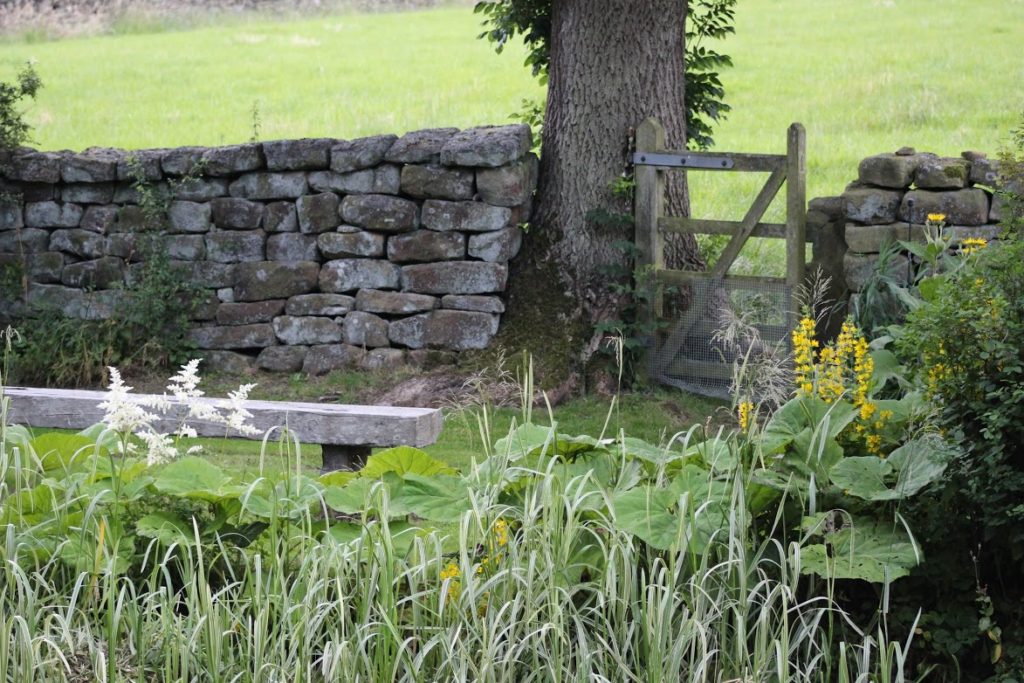


:max_bytes(150000):strip_icc():format(webp)/GettyImages-1132611639-5c92a17846e0fb0001ac1347.jpg)
